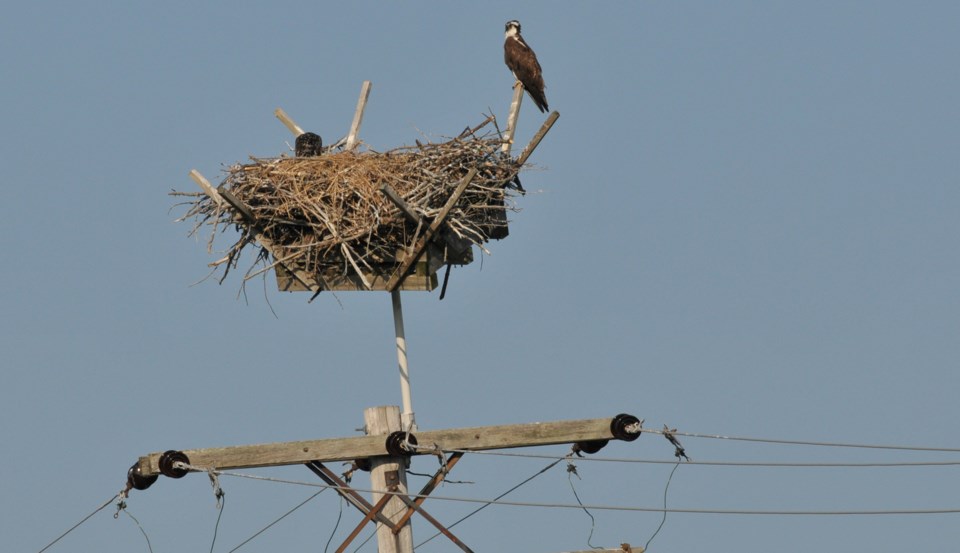One of the larger birds to be found around our waterways is the osprey, earlier called a ‘fish hawk’, so named for its favourite diet. Their population was dropping rapidly in the 1970s but has now climbed to being a rather common water bird.
Their very large stick nests can be found near Bass Lake, Lake Simcoe, Lake Couchiching, Lake St. John, Lake Dalrymple and anywhere else that has a waterbody large enough to be home to good-sized fish. The male osprey adds new sticks to the nest each spring, and an old nest may be several metres high and just as wide.
The osprey is unique on several fronts, the foremost being it is among the oldest species of birds, with researchers estimating it has been on the planet for about 11 million years! These birds are so specialized that they have their own Genus and Family (with a few varieties found world-wide).
Speaking of world-wide, osprey can be found living on every continent except Antarctica. They prefer the boreal regions of Europe and North America, but mapping also shows the entire Australian coastline. Only the Peregrine falcon has a greater world presence.
Having a diet of big slippery fish, the osprey has evolved to catch fish by diving at them from a great height and entering the water feet first; it is common for the entire bird to go underwater and usually emerge with a meal in tow.
To hold onto these wriggling, slimy fish, the feet of the osprey have two interesting ‘modifications’… the soles of the feet are a very coarse series of spicules (small spikes) and the outer two can rotate to form a clamping grasp on the fish. While flying the fish is usually arranged in an aerodynamic position of being head first.
During the breeding season, the male does all the fishing while the female diligently sits on and protects the eggs. There are few predators of osprey, as the eggs and nestlings are rarely left in the open. Even after fledging, the young are fed by the male.
Should a canoeist or hiker come close to the nest, the male will circle closely, chittering a high pitched “kii-kii-kii”; actual attacks on humans are very rare, as the osprey feels that a well-placed warning should be deterrent enough to make you shy away.
These birds have been known to have eight different vocalizations from excitement, to alarm, to feeding. In addition, they can display 11 different physical postures, again from agitation to excitement to rest.
During the 1950s and 1960s, when organochlorine pesticides were all the rage (one being DDT) many osprey nesting attempts were failures due to the eggs having been laid with very thin shells. After this group of pesticides were identified and banned, the osprey population has rebounded amazingly well.
There are a couple of reasons for the increase in population, one being that osprey often live for 20 years or more; during the time of pesticide contamination the adults continued to live to try again next year. When they once more laid solid shelled eggs, the population began to rebuild.
Another cause of population increase was the installation of artificial nesting platforms along shorelines. While the birds still do nest atop hydro poles, they have a choice to relocate to an artificial pole with a pallet box bolted on top. The Georgian Bay Osprey Society has been successful in working with Ontario Hydro to create dozens of these nest structures.
Our local lakes provide enough bass, pike, carp and suckers for the osprey to dine upon; local human anglers should view this raptor with respect for its ability to bring home more fish than they often do!
Easily seen from canoe or shore, most outdoor enthusiasts can find an osprey or two on a shoreline excursion. If you do see one, realize that this bird represents a story of disaster (pesticide contamination) and redemption (successful use of artificial nests).
